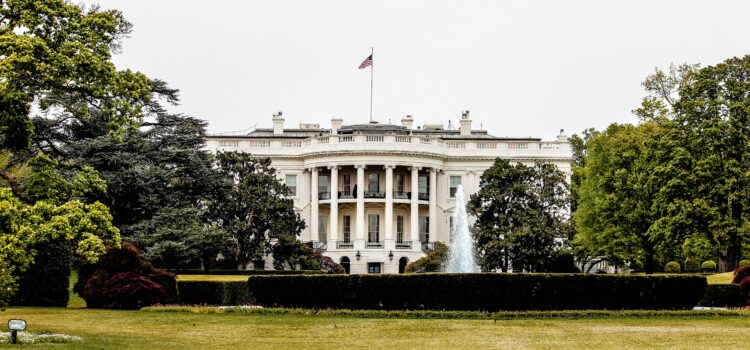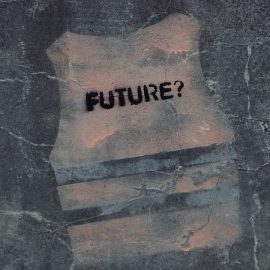

This article is an excerpt from the Shortform book guide to "His Very Best" by Jonathan Alter. Shortform has the world's best summaries and analyses of books you should be reading.
Like this article? Sign up for a free trial here.
What was Jimmy Carter’s campaign strategy when he ran for president? Why was it effective?
In His Very Best, biographer Jonathan Alter presents a fresh perspective on Jimmy Carter’s life and career. One major chapter in Carter’s story is his successful run for president in 1976.
Keep reading to learn about Jimmy Carter’s campaign strategy and how it succeeded.
Jimmy Carter’s Campaign for President
Just as he eyed the governorship while serving in the Georgia State Senate, Carter turned his ambitions to the presidency while serving his term as governor. Jimmy Carter’s campaign was a long shot. But, his homespun values of honesty and integrity came as a breath of fresh air in the cynical 1970s and made his candidacy a viable bid for the White House. Carter leveraged the disillusionment voters felt after the Watergate scandal to present himself as a Washington outsider—an honest man of faith who’d restore the nation’s dignity. Coupled with strategic campaigns in crucial regions of the country, this strategy would win Carter a narrow victory over incumbent President Gerald Ford.
| The Watergate Scandal The Watergate Scandal that opened the door to Carter’s long-shot presidential campaign began in 1972 when agents of President Richard Nixon’s reelection campaign were caught stealing documents and attempting to wiretap the Democratic National Committee’s headquarters in the Watergate building in Washington, DC. Nixon denied any connection with the break-in and won reelection, though questions remained about his level of involvement. After an investigation by the FBI and a series of exposés by Washington Post journalists Bob Woodward and Carl Bernstein, Nixon’s cover-up of his part in the scandal came to light, leading him to resign from office in 1974 rather than face impeachment by Congress. He was replaced by Vice President Gerald Ford, who then pardoned Nixon for any crimes he may have committed, an act that cast a shadow on the rest of Ford’s presidency. |
Distrust of government was at an all-time high, which Carter saw as a nationwide emotional crisis. His public reaction to Watergate was one of disappointment instead of anger, and he campaigned on the message that honesty in government was what the country needed most. Carter’s humble background and genial charm cast him as former President Nixon’s opposite. Voters were drawn to Carter’s status as an outsider to national politics, as well as to his promise not to lie to the American public. Alter says that the latter was a stretch—Carter did exaggerate on occasion, and because of his promise, the media held him to a higher standard of truthfulness than his opponents.
(Shortform note: While there’s no absolute measure of a president’s honesty, the Siena College Research Institute conducts regular polls of political experts and presidential historians to rank past presidents on multiple factors. In the 2022 survey, Carter ranked 2nd in integrity—falling short only to “Honest Abe” Lincoln—though Carter scored low in other vital factors, such as 34th on his handling of the economy, 37th in both party leadership and his relationship with Congress, and 40th out of 45 presidents on his amount of luck while in office.)
Despite the fact that Carter made a point of separating politics and religion while governor, he opened up about his Christianity on the presidential campaign trail while still affirming his belief in church and state separation. He framed his faith in terms of love and compassion for all, which came as a balm to many Americans weary from scandals and the war in Vietnam. Alter points out that Carter was the first presidential candidate to identify as Evangelical, a religious group who were just beginning to coalesce as a political force—and who, after Carter, would switch their allegiance to the Republican Party.
(Shortform note: In the US, “Evangelical” is a blanket term that encompasses several different Protestant groups united by their belief in the historical accuracy and absolute moral authority of the Bible. One factor that differentiates Evangelicals from other fundamentalist groups, such as Jehovah’s Witnesses, is their active engagement in politics. The modern Evangelical movement coalesced in response to the cultural shifts of the 20th century, such as the civil rights movement, the feminist movement, and the sexual revolution of the ’60s and ’70s, all of which were seen as a threat to established institutions and traditional family structures.)
Carter was not the early favorite to win the Democratic nomination, but strategic victories in early state primaries earned him press coverage and national recognition. The US’s political parties weren’t as polarized during this time as they are today, so Carter was able to straddle the liberal/conservative divide by taking progressive stances on racial equity, the environment, and even gay rights while aligning with conservatives on business issues and wasteful government spending. Alter argues that adopting a middle-road stance let Carter win the Democratic nomination without really energizing the party as a whole.
The general election came down to the wire. In the end, Carter won the popular vote by only two percentage points, and the electoral college vote was close as well. Carter’s identity as a Southerner helped him carry that region despite his work towards ending segregation, though Alter suggests that Carter’s win reconfigured the Democratic party by bringing an end to its conservative wing. After 1976, the American South would consistently back Republican candidates in all following elections.
| The Changing Democratic Party The US’s two major parties sprang from the same root—the Democratic-Republican Party founded by Thomas Jefferson and his allies. After defeating the Federalist Party in 1800, the Democratic-Republicans functioned as the US’s dominant political group until splitting in the presidential election of 1824. The bloc led by John Quincy Adams, which favored the interests of the northeastern states, became known as the National Republicans, whereas supporters of Andrew Jackson, whose power drew heavily from the South, became the Democratic Party. During the 1800s, the Democratic Party favored limited federal government, but the party fractured in 1860 over the issue of slavery, allowing Lincoln to win the presidency. After the US Civil War, the Democratic Party continued to stand against a strong central government and African-American rights. However, both these positions would change in the 20th century. The first shift happened when Democratic president Franklin D. Roosevelt expanded the federal government to create work programs and infrastructure projects to lift the country out of the Great Depression. The party remained split on race as northern Democrats like John F. Kennedy pushed civil rights reform while those in the South favored segregation. When Republican presidential candidate Barry Goldwater opposed the Civil Rights Act during his 1964 campaign, many African-Americans switched to the Democratic Party, which enabled Southern integrationists like Carter to finally act on their views. |
Alter says that, because Carter had no driving political ideology, he was free to focus on the country as a whole without being beholden to any particular interest groups. Unfortunately, since Carter won by such a narrow margin, his power base would be shaky going forward. Carter had the advantage of a Democratic congress, but it was during an era when congressmen didn’t strictly vote along party lines. Over the next four years, Carter would attempt to lead the country using logic and practicality, not force of personality. To the consternation of his staff and advisors, he would stubbornly pursue whatever he felt were the right policy decisions without considering the political blowback from his choices.
(Shortform note: During Carter’s term, the political parties weren’t as heavily polarized as they are today. In Why We’re Polarized, Ezra Klein observes that, in the 1970s, the typical voter was far more likely to split their ballot between Republican and Democratic candidates. As a result, congressmen from both parties would cater to the views of both their liberal and conservative constituents. According to data from the Pew Research Center, both parties were more ideologically centrist during the 1970s and less likely to vote as monolithic groups.)

———End of Preview———
Like what you just read? Read the rest of the world's best book summary and analysis of Jonathan Alter's "His Very Best" at Shortform.
Here's what you'll find in our full His Very Best summary:
- A fresh perspective on Jimmy Carter's time as president
- How Carter's early life shaped his political career
- The long-term effects of what Carter accomplished while president






